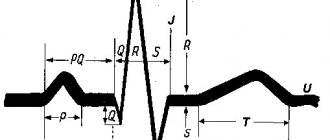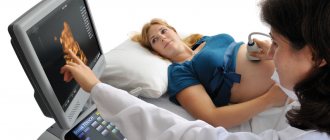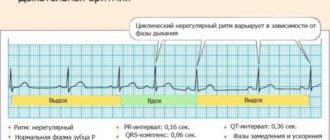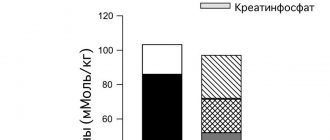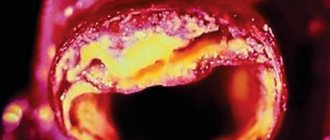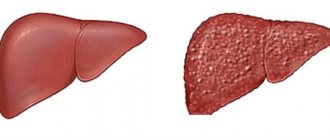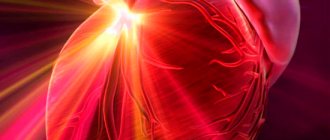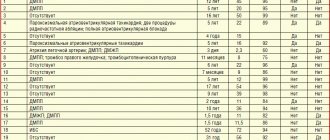This is the second article in a series about a healthy heart, author - Ksenia Benimetskaya, cardiologist, nutritionist, Ph.D. This time we’ll tell you how different types of activity affect the heart, how much and how to train so as not to overdo it.
Regular moderate physical activity maintains and improves heart health. This is exactly the same as in the #sekta courses
What are the benefits of physical activity for the heart?
Physical activity maintains and improves health: has a positive effect on cognitive function, sleep, reduces the risk of depression and anxiety, helps maintain a normal weight and improves quality of life. And, most importantly, it improves heart function and prolongs life: as we wrote in the article “How Diet Impacts Heart Health,” cardiovascular disease (CVD) is one of the leading causes of death in the world.
How exactly movement helps the cardiovascular system:
- Prevents the development of atherosclerosis: by reducing body weight, blood pressure and cholesterol levels in the blood are normalized, insulin sensitivity is improved and the risk of developing type 2 diabetes is reduced.
- Prevents thrombosis.
- Improves the function of the endothelium lining blood vessels - the synthesis of nitric oxide and its bioavailability increases, the balance of oxidants and antioxidants in the vascular wall improves. Nitric oxide, an important molecule for the cardiovascular system, is responsible for the tone of the vascular wall, prevents platelet activation, and prevents leukocytes from sticking to the inner surface of blood vessels.
- It has anti-inflammatory, anti-ischemic and antiarrhythmic effects.
At the cellular level, regular exercise helps optimize energy use and increases resistance to oxidative stress.
It is thanks to these effects that those who move enough are less likely to suffer from heart attacks and strokes, arterial hypertension, less likely to die from cardiovascular diseases, live longer and have a higher quality of life.
Unfortunately, only 19% of women and 26% of men move enough. A sedentary lifestyle is widespread: one in four people in the world exercise less than they should, and this figure is growing.
content .. 140 141 142 143 144 145 146 147 148 149 ..Heart (human anatomy)
Heart development (human anatomy)
The heart anlage appears in an embryo 1.5 mm long at the end of the 2nd week of intrauterine development in the form of two endocardial sacs arising from the mesenchyme. From the visceral mesoderm, myo-epicardial plates are formed, which surround the endocardial sacs. This is how two heart rudiments arise - cardiac vesicles, lying in the cervical region above the yolk sac. Subsequently, both cardiac vesicles close together, their inner walls disappear, resulting in the formation of one cardiac tube. From the layers of the heart tube formed by the myo-epicardial plate, the epicardium and myocardium are subsequently formed, and from the endocardial layer - the endocardium. In this case, the heart tube moves caudally and turns out to be located ventrally in the ventral mesentery of the foregut and covered with a serous membrane, which, together with the outer surface of the heart tube, forms the pericardial cavity.
The heart tube connects to developing blood vessels (see section Circulatory System, this edition). Two umbilical veins flow into its posterior section, carrying blood from the villous membrane, as well as two vitelline veins, bringing blood from the yolk bladder. Two primary aortas depart from the anterior part of the heart tube, which form 6 aortic arches (see section Circulatory system, this edition). Thus, the blood flows through the tube in one stream.
The development of the heart goes through four main stages - from single-chamber to four-chamber (Fig. 139).
Rice. 139. Embryonic development of the heart. a - three stages of development of the external shape of the heart; b - three stages of the formation of heart septa
Single chamber heart
. Due to the uneven growth of the heart tube, an S-shaped bend is formed, which is accompanied by a change in its shape and position. Initially, the lower end of the tube moves upward and posteriorly, and the upper end moves downward and anteriorly. In an embryo 2.15 mm long (3rd week of development), four sections can be distinguished in the S-shaped heart: 1) the venous sinus, into which the umbilical and vitelline veins flow; 2) the next venous section; 3) the arterial section, curved in the shape of a knee and located behind the venous; 4) arterial trunk.
Two-chambered heart
. The venous and arterial sections grow greatly and a deep constriction appears between them. Both sections are connected only through a narrow short canal, called the auricular canal, which lies at the site of the constriction. At the same time, from the venous section, which is the common atrium, two outgrowths are formed - future cardiac ears, which cover the arterial trunk. Both legs of the arterial section of the heart fuse with each other, the wall separating them disappears, resulting in the creation of one common ventricle. In addition to the umbilical and vitelline veins, two common veins flow into the venous sinus, formed by the fusion of the anterior and posterior cardinal veins. In the two-chamber heart of an embryo 4.3 mm long (4th week of development), there are: a venous sinus, a common atrium with two ears, a common ventricle communicating with the atrium by a narrow auricular canal, and an arterial trunk limited from the ventricle by a slight narrowing. At this stage of development there is only one large circle of blood circulation.
Three-chambered heart
. At the 4th week of development, a fold appears on the inner surface of the common atrium, growing downwards and forming a septum in the embryo 7 mm long (beginning of the 5th week) dividing the common atrium into two: right and left. However, a hole remains in the septum (foramen ovale), through which blood from the right atrium passes into the left. The auricular canal is divided into two atrioventricular openings.
Four chambered heart
. In an embryo 8-10 mm long (end of the 5th week), a septum growing from bottom to top is formed in the common ventricle, dividing the common ventricle into two: right and left. The common arterial trunk is also divided into two sections: the future aorta and the pulmonary trunk, which connect respectively to the left and right ventricles. At the same time, semilunar valves are formed in the truncus arteriosus and its two parts. Subsequently, the superior vena cava is formed from the right common cardinal vein. The left common cardinal vein undergoes reverse development and is transformed into the coronary venous sinus of the heart (see section Circulatory system, this edition).
content .. 140 141 142 143 144 145 146 147 148 149 ..
Different types of physical activity and their effect on the heart
To achieve the positive effects of movement, it is necessary to follow at least the minimum recommendations for physical activity.
But when you read the recommendations, keep in mind: “physical activity” and “workout” are not the same thing. Let’s figure out how the concepts differ and how this will help us meet the load standards.
Physical activity is body movement caused by skeletal muscle contraction that increases energy expenditure above baseline levels. This is any physical activity: professional, household, for the purpose of movement, active recreation. In addition, any physical activity can be of varying intensity.
Exercise is planned, structured, repetitive and purposeful physical activity to maintain or improve physical fitness.
And physical activity is the effect that various physical activities have on the human body.
When you exercise, you are engaging in physical activity. But you can also be active outside of training, when you are walking somewhere, carrying bags from the store, walking down the stairs, or simply getting up from a chair.
The main types of physical activity are cardio and strength training, and there are also training sessions for balance, flexibility, coordination, stretching and many others.
Cardio load
During cardio training, the heart rate increases and aerobic activity predominates. If this happens regularly, the heart and blood vessels adapt to physical activity - as a result, the entire cardiovascular system is trained.
Thanks to aerobic activity:
- heart rate and blood pressure decrease at rest and during physical activity;
- the need of the heart muscle for oxygen decreases;
- the contractility of the heart muscle increases;
- peripheral venous tone increases;
- favorable changes occur in the fibrinolytic system, which fights blood clots;
- due to increased synthesis of nitric oxide, better blood supply to tissues occurs due to the expansion of the diameter of blood vessels;
- parasympathetic tone increases, which reduces the impact of stress on the body at the neurophysiological level, heart rate and blood pressure decrease;
- coronary blood flow improves due to the development of collateral vessels - additional “connections” between the arteries of the heart.
Aerobic physical activity recommendations for adults: at least 150–300 minutes per week of moderate-intensity activity or at least 75–150 minutes of vigorous-intensity activity. Activities of different intensity can be combined. Read more in our article “Recommendations for physical activity.”
Power load
Strength training helps strengthen muscles: this can occur as a result of dynamic work, such as in weightlifting, or static work, such as in gymnastics and yoga. Strength exercises can be performed using sports equipment, machines and your own weight.
Strength training improves your psycho-emotional state, sleep, cognitive abilities, and helps cope with depression. They also improve body composition, increase muscle mass and reduce the amount of fat, including visceral fat.
Excess visceral fat is a risk factor for the development of metabolic syndrome, diabetes, chronic systemic inflammation, and, as a result, heart disease.
Strength training increases the body's anaerobic capacity, but can also work on aerobic capacity and improve endurance, especially in untrained people.
For those who have not exercised for a long time or have never exercised or are recovering from an illness, it is recommended that you begin your training program with simple strength exercises to develop the minimum strength necessary for subsequent work.
It is recommended for all adults to add an aerobic component to any strength training program: scientific evidence indicates that strength training combined with aerobic physical activity provides greater health benefits than either activity alone. Strength training for large muscle groups should be done at least twice a week.
Other activities
Other types of activity are also good for the heart. For example, yoga, which includes asanas, breathwork, relaxation and meditation.
This activity is beneficial because it helps relieve psychosocial stress (related to work or family), calm you down, and reduce the risks of depression and anxiety disorders by activating the parasympathetic nervous system. And all of these conditions are associated with an increased risk of cardiovascular disease.
Research shows that yoga has a positive effect on cardiometabolic health: it helps control weight, blood pressure, and lipid levels. Yoga helps to better control atrial fibrillation, heart failure and other diseases.
In addition, yoga, stretching, Pilates and other similar activities can encourage healthy habits that have a positive impact on cardiovascular health.
Different types of yoga emphasize different components of activity and can be classified as low to moderate (rarely high) intensity physical activity.
Tai chi, a martial art - and now a form of health activity - combines an aerobic component with relaxation. That’s why it is also called “meditation in motion.” A new study has found that for people with heart problems, tai chi improves quality of life and reduces stress, anxiety and depression.
Yoga and tai chi develop flexibility and balance. They do not directly affect heart health, but they do benefit musculoskeletal health because they prevent muscle and joint pain and help maintain mobility.
Good musculoskeletal health allows you to perform aerobic and strength exercises, the benefits of which are obvious for the heart. It is important that developing flexibility, stretching and balance prevents falls and injuries during exercise and everyday activities.
What body systems begin to work in a new way?
After conceiving a child, global physiological changes occur in a woman’s body. Great changes are observed in the functioning of the endocrine system. The production of hormones of the anterior pituitary gland, which are responsible for the formation and development of the follicle in the ovary, is suppressed. The corpus luteum is formed - a hormone-producing gland that plays a key role in maintaining pregnancy in the early stages.
A temporary gland forms in the right or left ovary after ovulation and produces progesterone. Functions of progesterone:
- prevents the release of new eggs and the development of menstrual bleeding;
- stimulates the growth of the endometrium, prepares the uterine mucosa for the implantation of the fertilized egg,
- ensures implantation of the embryo and its further normal development;
- promotes the formation of a mucus plug in the cervix, which is necessary to protect the embryo from infections;
- reduces the tone of the muscular layer of the uterus, preventing its contraction and miscarriage.
In non-pregnant women, the corpus luteum dissolves two weeks before menstruation. During the period of bearing a child, it exists until 10-12 weeks of gestation, after which the temporary gland ceases to exist and its functions are performed by the placenta.
The functioning of the corpus luteum is ensured by the hormone hCG, which begins to be produced by chorion tissue 6-8 days after the fusion of male and female gametes. HCG enhances the synthesis of sex hormones and corticosteroids produced in the adrenal cortex.
An important hormone during pregnancy is prolactin, which is produced by the pituitary gland. Starting from the 8th week of pregnancy, prolactin production increases. This is necessary to prepare the mammary glands for breastfeeding, as well as for the normal formation of the lung tissue of the embryo.
In the early stages of pregnancy, the functioning of the thyroid gland changes. The organ increases in size and begins to synthesize more hormones that are important for the development of the embryo.
The immune system
During the period of bearing a child, even in an absolutely healthy woman, the body's defenses decrease. This is due to changes in hormonal levels and the body’s adaptation to new conditions.
The likelihood of acute inflammatory processes and exacerbation of chronic diseases increases. Pathologies of the respiratory, digestive, and genitourinary systems may worsen. The situation is often complicated by the fact that many preventive and therapeutic medications are contraindicated during pregnancy.
What can a pregnant woman do to strengthen her immune system?
- Create a useful menu. Fresh vegetables and fruits, dairy products, fish, nuts, green tea - all this strengthens the immune system.
- Lead an active lifestyle and monitor your body weight. Excess weight and inactivity reduce the body's defenses.
- Avoid stress. Emotional experiences suppress the functioning of the immune system.
In addition, during pregnancy it is important to treat any inflammatory processes in a timely manner. All body systems are interconnected. For example, a common cold can cause acute pyelonephritis or other serious illness.
Psycho-emotional changes
Almost all women during pregnancy are subject to sudden emotional changes, because changes in hormonal levels affect the functioning of the central nervous system. The psycho-emotional state of a pregnant woman often worsens during toxicosis. In this regard, a pregnant woman may experience:
- tearfulness;
- irritability;
- dizziness;
- drowsiness.
As a rule, such manifestations are characteristic only of early pregnancy. Good sleep, moderate physical activity, pleasant activities and hobbies will help you cope with emotional stress in the first trimester.
Online consultation with a gynecologist
Online consultation
During the consultation, you will be able to voice your problem, the doctor will clarify the situation, interpret the tests, answer your questions and give the necessary recommendations.
Excessive exercise is not good for heart health
Official guidelines do not specify an upper limit for healthy physical activity. However, they do warn about the risks of injury and health problems from overindulging in high-intensity training.
Long-term endurance exercise is associated with an increased risk of anxiety disorders and depression, adverse changes in the structure of the heart and arteries, which can lead to consequences including serious arrhythmias.
Chronic training and competition in extreme sports can cause negative cardiovascular effects. We are talking about marathons, ultramarathons, Ironman triathlon, long-distance cycling races, etc.
Other studies on excessive exercise:
- A study of patients who had suffered a myocardial infarction looked at how intensity and duration of exercise affected health for more than a decade. Observations have shown that running and walking reduce the risk of mortality from cardiovascular diseases, but the benefits of exercise for the same purposes decrease at high levels of physical activity: running more than 7.1 km/day or brisk walking more than 10.7 km/day.
- Another study of patients with coronary artery disease found that both physically inactive patients and patients with daily vigorous physical activity had an increased risk of death from cardiovascular causes compared with patients with moderate physical activity.
- These observations are confirmed in a study of people without CVD: moderate activity was associated with a lower risk of CVD compared with low activity, and daily vigorous physical activity was associated with an increased risk of CVD.
- The epidemiological study Copenhagen City Heart Study examined the effect of different levels of activity on mortality. The researchers found that jogging at an easy to moderate pace was associated with lower mortality compared with being sedentary and not exercising. At the same time, intense runners had nearly the same mortality rate as sedentary people.
The question of whether there is an upper level of physical activity beyond which it no longer provides health benefits requires further research. It is likely that “excessive” physical activity is determined individually and depends on various factors, including a person’s age, health, and lifestyle.
Available evidence suggests the benefits of moderate physical activity compared with sedentary lifestyles and excessive activity. In any case, do not forget that rest is an important part of the training process; it helps the body recover before the next workout.
Symptoms of excessive exercise, or overtraining:
- inability to work and train at the same level while maintaining the same conditions;
- the need for longer rest;
- frequent fatigue;
- mood swings, irritability, anxiety, depression;
- sleep problems;
- muscle pain, heaviness in the arms and legs;
- frequent injuries during training;
- loss of motivation;
- frequent ARVI;
- weight loss.
If you exercise a lot and have any of these symptoms, reduce the amount of physical activity or take a break from it completely for 1-2 weeks. Often this is all that is required for recovery. If after 1–2 weeks of rest you do not feel better, consult a doctor: you may need a longer rest.
How to exercise without harming your heart
Consult your doctor before starting to exercise if you have not exercised for a long time or have never exercised. If you have heart disease or risk factors for it, your doctor may recommend an exercise tolerance test.
Start training gradually. For example, do the exercises at a slow pace or only for a few minutes. Over time, you can increase the intensity and duration. Warm up before your workout and cool down after.
Stop exercising and contact your doctor immediately if you experience any of the following symptoms during exercise:
- pain, tightness, heaviness in the chest, arms, throat, jaw, or back;
- nausea or vomiting;
- a feeling of “fluttering” of the heart or a very rapid heartbeat;
- severe dizziness, weakness, fatigue;
- inability to catch your breath;
- pain in the joints, legs, heels or calf muscles (this is not an emergency, but it is also better to consult a doctor about it).
So that the training does not harm:
|
Use household activities if you find it difficult to find time for a full workout:
- take the stairs instead of the elevator;
- park further from your destination or get off one stop earlier than yours on public transport;
- take a longer route when going somewhere;
- spend your free time actively, choose outdoor games;
- get a pet that needs to be walked;
- clean the house yourself.
The health of your cardiovascular system and other body systems depends on whether you move enough. There are no pills, supplements, devices or techniques that can take the place of movement, so take every opportunity to move.
Author: Ksenia Benimetskaya, cardiologist, nutritionist, Ph.D.
Literature
1. The Physical Activity Guidelines for Americans, JAMA, 2021 2. Strength training for health in adults: Terminology, principles, benefits, and risks — UpToDate 3. The benefits and risks of aerobic exercise — UpToDate 4. Exercise-induced oxidative stress: cellular mechanisms and impact on muscle force production, Physiol Rev, 2008 5. Worldwide trends in insufficient physical activity from 2001 to 2016: a pooled analysis of 358 population-based surveys with 1·9 million participants, Lancet Glob Health, 2021 6. Recommendations on physical activity, Sekta 7. Resistance training and executive functions: a 12-month randomized controlled trial, Arch Intern Med, 2010 8. Different modalities of exercise to reduce visceral fat mass and cardiovascular risk in metabolic syndrome: the RESOLVE randomized trial, Int J Cardiol, 2013 9. The effect of 12 weeks of aerobic, resistance or combination exercise training on cardiovascular risk factors in the overweight and obese in a randomized trial, BMC Public Health, 2012 10. Is yoga heart-healthy? It's no stretch to see benefits, science suggests, Heart.org, 2021 11. 2021 European Guidelines on cardiovascular disease prevention in clinical practice: The Sixth Joint Task Force of the European Society of Cardiology and Other Societies on Cardiovascular Disease Prevention in Clinical Practice ( constituted by representatives of 10 societies and by invited experts) 12. The effectiveness of yoga in modifying risk factors for cardiovascular disease and metabolic syndrome: A systematic review and meta-analysis of randomized controlled trials, European Journal of Preventive Cardiology, 2014 13. Effects of yoga in patients with paroxysmal atrial fibrillation - a randomized controlled study, European Journal of Cardiovascular Nursing, 2021 14. Yoga for Heart Failure: A Review and Future Research, Int J Yoga, 2021 15. Tai Chi Boosts Heart Health, Cleveland Clinic, 2021 16. Tai Chi exercise for psychological well-being among adults with cardiovascular disease: A systematic review and meta-analysis, European Journal of Cardiovascular Nursing, 2021 17. 3 Kinds of Exercise That Boost Heart Health, Hopkins medicine 18. State of the Art Review: Atrial Fibrillation in Athletes, Heart Lung Circ, 2021 19. Atrial Fibrillation (AF) in Endurance Athletes: a Complicated Affair, Curr Treat Options Cardiovasc Med, 2021 20. Atrial fibrillation in athletes and general population. A systematic review and meta-analysis, Medicine, 2021 21. The “Extreme Exercise Hypothesis”: Recent Findings and Cardiovascular Health Implications, Curr Treat Options Cardiovasc Med, 2021 22. Increased Cardiovascular Disease Mortality Associated With Excessive Exercise in Heart Attack Survivors, Mayo Clinic Proceedings, 2014 23. A reverse J-shaped association of leisure time physical activity with prognosis in patients with stable coronary heart disease: evidence from a large cohort with repeated measurements, Heart, 2014 24. Frequent physical activity may not reduce vascular disease risk as much as moderate activity: large prospective study of women in the United Kingdom, Circulation, 2015 25. Dose of Jogging and Long-Term Mortality: The Copenhagen City Heart Study, Journal of the American College of Cardiology, 2015 26. Are you getting too much exercise? MedlinePlus, 2020

